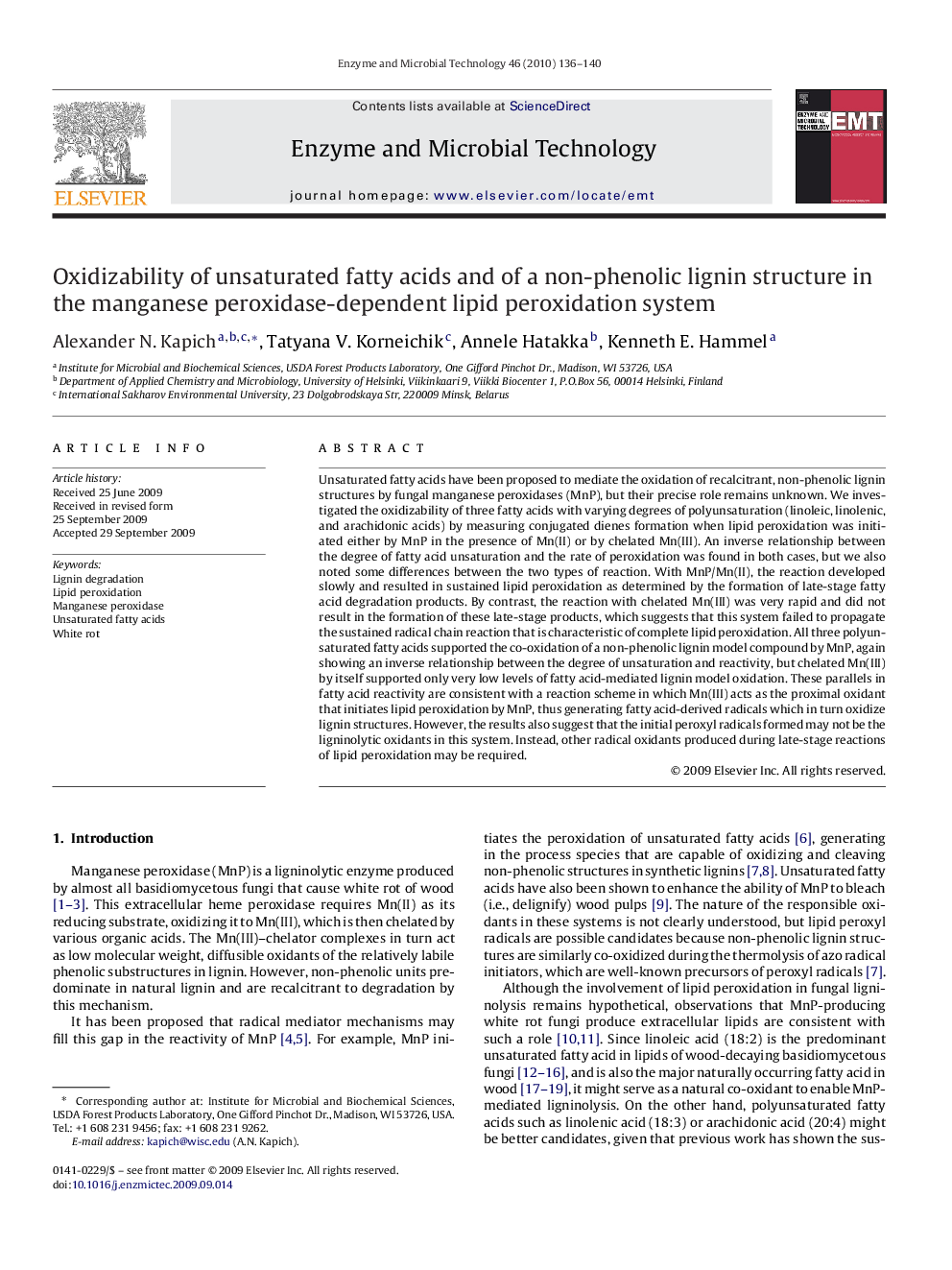| کد مقاله | کد نشریه | سال انتشار | مقاله انگلیسی | نسخه تمام متن |
|---|---|---|---|---|
| 17721 | 42691 | 2010 | 5 صفحه PDF | دانلود رایگان |

Unsaturated fatty acids have been proposed to mediate the oxidation of recalcitrant, non-phenolic lignin structures by fungal manganese peroxidases (MnP), but their precise role remains unknown. We investigated the oxidizability of three fatty acids with varying degrees of polyunsaturation (linoleic, linolenic, and arachidonic acids) by measuring conjugated dienes formation when lipid peroxidation was initiated either by MnP in the presence of Mn(II) or by chelated Mn(III). An inverse relationship between the degree of fatty acid unsaturation and the rate of peroxidation was found in both cases, but we also noted some differences between the two types of reaction. With MnP/Mn(II), the reaction developed slowly and resulted in sustained lipid peroxidation as determined by the formation of late-stage fatty acid degradation products. By contrast, the reaction with chelated Mn(III) was very rapid and did not result in the formation of these late-stage products, which suggests that this system failed to propagate the sustained radical chain reaction that is characteristic of complete lipid peroxidation. All three polyunsaturated fatty acids supported the co-oxidation of a non-phenolic lignin model compound by MnP, again showing an inverse relationship between the degree of unsaturation and reactivity, but chelated Mn(III) by itself supported only very low levels of fatty acid-mediated lignin model oxidation. These parallels in fatty acid reactivity are consistent with a reaction scheme in which Mn(III) acts as the proximal oxidant that initiates lipid peroxidation by MnP, thus generating fatty acid-derived radicals which in turn oxidize lignin structures. However, the results also suggest that the initial peroxyl radicals formed may not be the ligninolytic oxidants in this system. Instead, other radical oxidants produced during late-stage reactions of lipid peroxidation may be required.
Journal: Enzyme and Microbial Technology - Volume 46, Issue 2, 5 February 2010, Pages 136–140